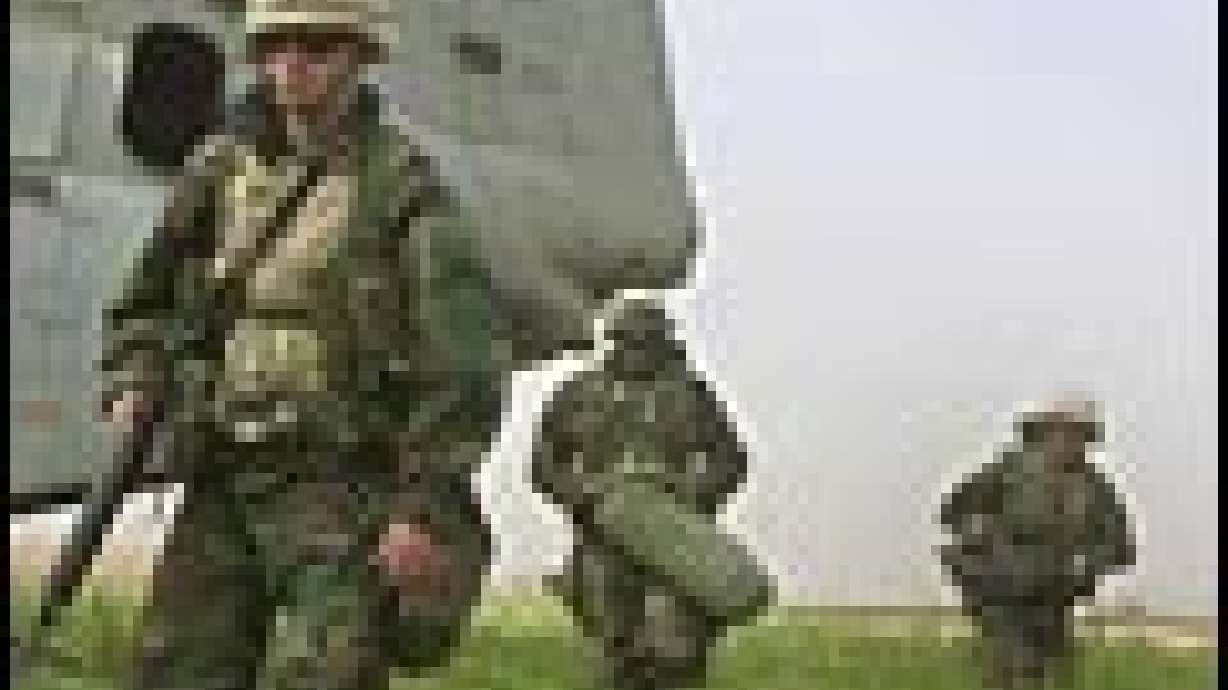Estimated read time: 4-5 minutes
This archived news story is available only for your personal, non-commercial use. Information in the story may be outdated or superseded by additional information. Reading or replaying the story in its archived form does not constitute a republication of the story.
WASHINGTON (AP) -- Fresh U.S. forces are flowing to the Persian Gulf, including 500 members of an Army cavalry regiment being sent ahead of schedule to help protect U.S. supply lines from Iraqi attack.
The buildup comes amid upbeat Pentagon assessments of progress against Iraq's strongest army force, the Republican Guard, which one U.S. general said Monday had suffered a "very significant weakening" from intensified American and British aerial bombardment.
"We know how it will end: The Iraqi regime will end," said Pentagon spokeswoman Victoria Clarke. "But we know that there could be some tough fighting ahead."
Maj. Gen. Stanley McChrystal, vice director of operations on the Pentagon's Joint Staff, told a news conference that more than 300,000 allied forces are now in the Gulf region, about 250,000 of them American. Last Friday his boss, Gen. Richard Myers, had put the allied total at 270,000.
McChrystal would not discuss specific missions of the additional forces that are en route to the Gulf or getting ready to go. They include 500 members of the Army's 2nd Armored Cavalry Regiment who left their Fort Polk, La., base on Sunday. They and their Humvee scout vehicles, Kiowa reconnaissance helicopters and other equipment were sent by air, enabling them to get to Iraq quicker than if the equipment had been sent by sea as originally planned.
Other members of the 2nd Armored Cavalry are to go by sea.
Iraqi paramilitary forces have launched hit-and-run attacks on supply lines between Kuwait and central Iraq, forcing U.S. commanders to devote more combat resources to protecting those lines.
The Army also is sending the 4th Infantry Division, its showpiece armored force, to Iraq. Members of the Fort Hood, Texas-based division began flying to Kuwait late last week. They originally were to deploy to Turkey to open a northern front against Baghdad, but Turkey refused access.
The first of about three dozen ships carrying the 4th Infantry's equipment arrived in Kuwait on Sunday, and the rest are expected to get there by mid-April. That would appear to make it unlikely the division will be ready in time to participate in a looming battle for Baghdad.
The 3rd Armored Cavalry Regiment, based at Fort Carson, Colo., also is going. Five ships carrying its equipment from ports in Texas are now on their way to the Gulf, and two more are loading.
Also scheduled to deploy, but not yet moving, is the 1st Cavalry Division from Fort Hood.
The Navy also is making adjustments. It announced Monday that four F/A-18 Super Hornet aircraft from the carrier USS Nimitz in the Indian Ocean have been temporarily reassigned to the USS Abraham Lincoln carrier battle group in the Persian Gulf.
The Super Hornets, which normally are used in a fighter role, will fly refueling missions, making up for what the Navy called a shortage of fuel for strike planes searching for targets over Iraq.
"There was significant evidence that the coalition's ability to support troops on the ground was being hampered due to a lack of airborne fuel which allows armed strike aircraft to loiter in the vicinity of enemy forces and attack them when called upon," said Capt. Jim Greene, deputy commander of Carrier Air Wing 11 aboard the Nimitz.
Once the Nimitz gets into the Gulf, it is expected to relieve the Lincoln, which is overdue to return to its home station at Everett, Wash.
The Navy has a total of three carriers in the Gulf and two in the eastern Mediterranean.
McChrystal gave an upbeat assessment of allied forces' progress on the ground in Iraq, particularly against the Republican Guard divisions protecting the approaches to Baghdad. He said intensified airstrikes over the weekend had taken much of the fight out of them.
"We see some very significant weakening and it will hit a tipping point in some of their formations," he said.
He said some elements of other Republican Guard units have moved to shore up the Medina Division that has been the main target of U.S. bombing.
McChrystal said about 3,000 precision-guided munitions -- bombs guided by satellite signals or laser designators -- were fired over the weekend, bringing the total since the war began March 20 to 8,000.
(Copyright 2003 by The Associated Press. All Rights Reserved.)









